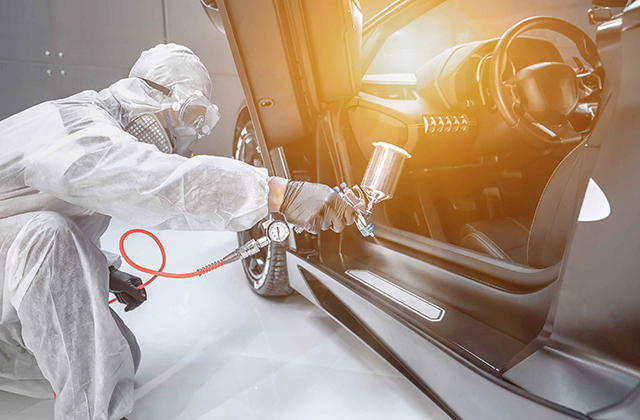Time is changing while technology moving 2 steps a time with automotive paint nowadays is a bit different, however paint protection Adelaide remains effective in my point of view. So you reached the stage where you’ve decided to change your car. But you never seem to have enough money, so you’ll have to add to your existing debts. You don’t really want to borrow any more because it’s such a struggle to repay, but you really need a car.
And now for the good news; it’s possible to save money on your next car…provided you know what to do.
1) Using A Loan
Most private cars are bought with borrowed money, either in the form of a personal loan or a special car finance scheme offered by a variety of dealers/lenders. Here’s how to get the best finance deal for your new vehicle.
a) Shop Around For The Best Interest Rate
Lenders are always competing for your business. It’s a buyer’s market, so don’t accept anything more than the going rate for someone of your financial status.
Use the internet to search for the lowest rate available. And bear in mind that lenders are constantly trying to attract new customers with special deals.
Doing your homework and comparing a range of different deals (always using the APR rate and the overall cost over the life of the loan) will allow you to get the best deal.
One advantage of using a personal loan rather than a car finance plan is that your loan and the rate of interest you’ll pay can be pre-approved before you go shopping. This means that you know how much the loan will cost you before you go shopping, and you won’t have to haggle with the car salesperson. The also removes the risk of them being able to confuse you into paying more for your car than you intended.
b) Improve Your Credit Rating
Having a good credit rating is one of the most important ways to save money on car loans (or any loan for that matter). The better your credit rating, the better deals you’ll be offered on your borrowing.
A good credit score = A low interest rate.
Again, take a look through the internet. There’s a wide range of information on how to build up your credit score.
For now, just remember than it’s important to pay all your loans on time (late payments of defaults will damage your credit score). It’s also important to keep your overall borrowing within reasonable limits. After all, from the lenders point of view, someone with heavy debts represents more of a risk.
c) Gather Together As Big A Deposit As Possible
The more money you have to put towards your new car the less you’ll have to borrow.
So in the months prior to changing your car, save as much money as you can to reduce the amount that you have to borrow. Every extra dollar you can put towards the deal may save you repaying two dollars.
It’s also important to take your current car into account. The more you can sell it for (or trade it in for), the less you’ll have to borrow to fund your new car. So with that in mind, here’s how to get the best trade in value.
- Take care of your car. Drive it carefully, and keep it well maintained and serviced
- Before you visit the car showroom, do your research. Find out how much your car is worth. Find out it’s trade value and the amount that a garage could sell it for. There figures will give you a rough idea how much the dealer should offer you for your old car
- Find out how much the dealer is willing to give you for it’s trade in value. And if a car dealer offers you a laughable sum for your old car just move on to the next dealership
Whatever happens, don’t haggle hard to get the best deal on your finance and then hand it back to the dealer by accepting a poor trade in value. It’s an unwritten rule of the car trade; the less the dealer makes on the sale of a car/the finance agreement, the less trade in value they’ll offer.
2) The Fund The Depreciation Trick
I must warn you that this technique is only for people who have an advanced understanding of money and finance.
If you can’t afford to buy your next car, and don’t want to pay the high rate of interest on most personal loans or car finance agreements, here’s what to do;
a) Choose a car that depreciates as slowly as possible. You can find this information in many car magazines or on the internet. Alternatively, you can work out your own figures using the prices charged for second hand models in your area.
So let’s say you decide to buy a new car that will be worth 66% of its value after three years (assuming it stays in good condition and covers an average amount of miles). That’s great.
It costs $30000. So you could get a personal loan at perhaps 8%, which might cost you $1100 per month over three years. But that seems rather steep, so you move on to the next stage of this idea.
b) Take a personal loan to cover the cost of the depreciation over the period you plan to keep the car. The car costs $30000 and will be worth $20000 when you sell it three years later. The depreciation will cost you $10000 over three years.
So you take a personal loan for $10000 over three years at a cost of $367 per month and move on to stage three.
c) Fund the rest of the cost by extending your mortgage on an interest only basis. The car costs $30000, you have $10000 from your personal loan, which leaves $20000 to find.
As a mortgage is secured borrowing (less risk for the lender) the interest rate is much lower. Assuming a low mortgage rate, another $20000 might cost $130 in interest per month.
Overall, it will cost you $497 per month to fund your car using this method.
Now you’ll notice that mentioned an interest only mortgage. This was to keep the cost of the loan down. All you need to do is to keep the debt from getting any bigger until you sell the car.
Three years later when you sell the car for $20000, you can use that to reduce your mortgage and get back to the position you were before you got the car.
So instead of it costing you $1100 a month (or an average of $544 a month when the sale price of the car is taken into account $1100 x 36 = $39600 – $20000 = $19600/36 = $544) throught the personal loan route, it will only have cost $497 each month. Saving an average of $47 per month (or $1692 over the three year period), and making it much easier to meet your monthly repayments.
In effect, what it does, is to save money by temporarily shifting the bulk of the price (the retained value) over to a long term loan (your mortgage) at a lower rate of interest, until you can repay it by freeing up the value of the asset (selling the car).
At the same time, the short term loss (the depreciation over 3 years) is repaid over the short term (three years) using the personal loan.
As I said, this is an advanced technique, but it will save you money on your next car. But let me say four things;
One: Only use it if you don’t have the money to buy your next car and don’t want to pay the high interest rates of a personal loan/car finance agreement.
Two: It will only work if the value of your property is enough to allow you to increase your mortgage.
Three: It also increases the risk that you won’t be able to pay your mortgage and your home will be repossessed.
Four: And there’s the risk that your could lose money if your car is written off and you don’t receive adequate compensation (but the same could happen if you borrow money to buy a car, regardless of how you borrow it).
3) Stay Ahead Of The Game
The ultimate way to save money on your next car is to be in a position to buy it without a loan. And that’s not as far fatched an idea as it might sound.
The idea is to gradually save money over the years that you keep the car, so that by the time you come to sell it, you’ll have enough money (along with the trade in value of your old car) to purchase your next car outright. You then repeat the process with the next car.
Let’s say you have a car worth $20000. You plan to keep it three years, by which time it will be worth $12000. Now allowing for inflation, your next car might cost perhaps $22000. That means you have to build up $22000 – $12000 = $10000 over the next three years. You will then be in a position to buy your next car without having to borrow any money.
This means you’ll have to save $270 a month ($10000/36 = $278) over the next three years. Open a special bank account and keep it specially for the purpose of renewing your car. Add a certain amount to it every month and you’ll never have to waste money on a car loan again. It’s also a good idea to choose a car that will hold as much of its value as possible during the time that you keep it.
But you may have noticed a slight problem with this idea. After all, if you have to repay a car loan every month, it’s going to be difficult if not impossible to save another $270 a month.
But there are two ways to get ahead of the game.
a) Save as much as you can each month, so that each time you change your car, you have to borrow less. Over time you’ll reach the position where you don’t have to borrow to buy a car.
b) Once you finish repaying a loan that you used to buy your car, keep it for as many years as possible. During that time, keep saving the money that you were using to repay the loan each month.
A example should help. You buy a car for $10000 using a three year personal loan for $367 per month. So after three years you own the car and have repaid the loan. So instead of changing the car or using the freed up income for other purposes, keep paying it into a different account for your next car.
After three more years you should have nearly $14000. That should be enough to replace your car with a similar size and model without using a loan. You are then ahead of the game.
All that’s left is to work out how much to save each month for your next car. Just use the following figures;
- Decide how long you want to keep your new car – 36 months
- How much it will be worth then – $8000
- The cost of your next car – $17000
In other words, you need to save 17000 – 8000 = 11000/36 = 305. So allowing for interest on your savings, you should aim to save $300 per month. And I can guarantee that you won’t resent the cost each month, especially when you know it’s going to benefit you and not swell some lender’s profits.
by Stuart Laing
Copyright (c) Get Out Of Debt [http://www.icanhelpyougetoutofdebt.com].
Have you been struggling with debt for as long as you can remember? Are you ready to do something about it? Visit for free, impartial debt help information.
This article may be freely distributed as long as the copyright, author’s information and active links are included.
Article Source: http://EzineArticles.com/expert/Stuart_Laing/13341
Article Source: http://EzineArticles.com/242000



